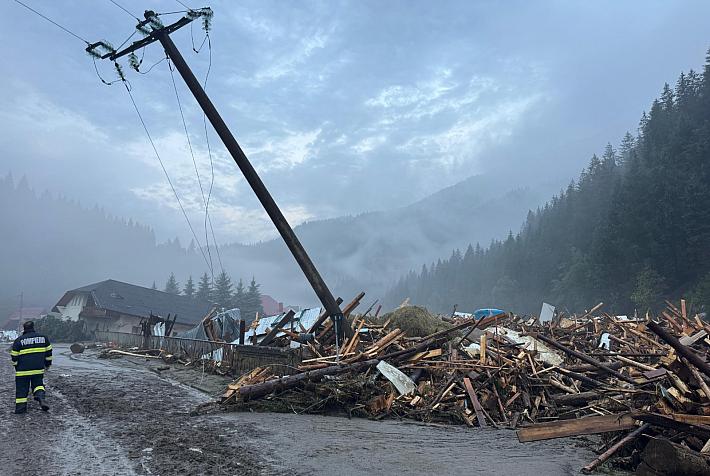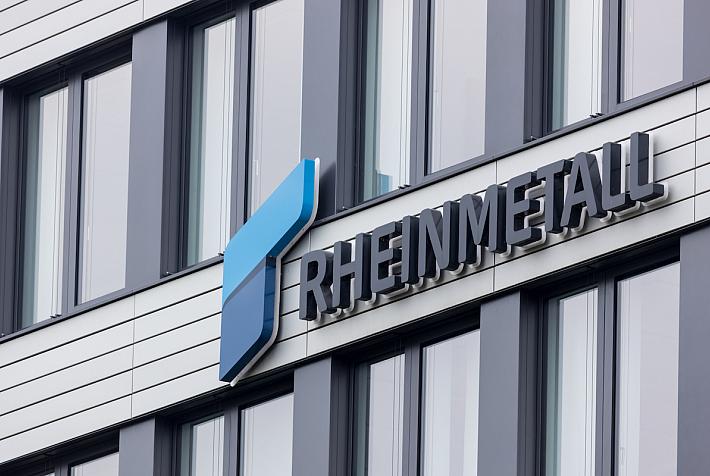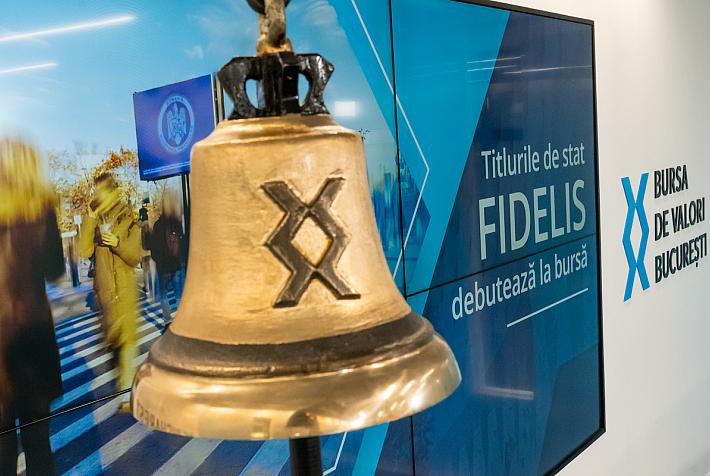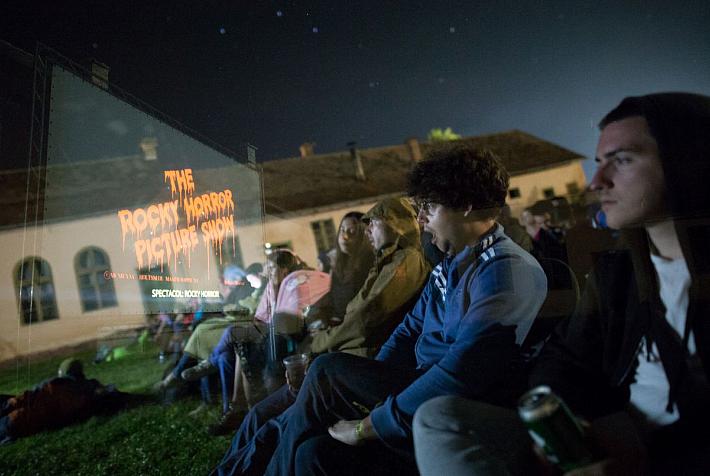Interview: Michelin keeps recruiting pace in Romania despite tight labor market

French group Michelin, one of the biggest tire manufacturers in the world, has doubled its number of employees in Romania, in the last five years, to over 4,000. Most of the employees work in the group’s three production sites in Prahova and Salaj, where two new investment projects worth EUR 93 million will create 250 new jobs. Meanwhile, the service center in Bucharest, launched in 2014, has reached a 15% share in the group’s total headcount in Romania and is developing fast.
“Our total recruiting volume in the next five years is over 1,500 employees,” Gabriela Alexandru (pictured), Regional HR Director of Michelin Central Europe, a region of 14,000 employees, told Romania-Insider.com. This is no easy task on an increasingly tight local labor market, but the group relies on the power of its brand and dynamic recruiting strategies to attract talent.
The company’s major challenge is getting technical candidates to areas outside big cities, respectively in Salaj and Prahova, as well as the low number of specialists in mechanics, automation and chemistry, Alexandru said. “As for the labor market in Bucharest, where we have been recruiting massively for the service center, our challenge is to become known to candidates in this activity area, given that we are generally perceived as an industrial company.”
While Romania used to be considered a country of cheap and well-trained labor force, this is no longer the case, according to the Michelin representative. “From technical competencies to soft or leadership competencies, the Romanian school doesn’t supply graduates at the same level we see in other countries, even neighboring ones. However, Romanians are ambitious, intelligent and adaptable, and recover within the first years of work the competence gap compared to Westerners.”
Read below the full interview with Gabriela Alexandru, Regional HR Director or Michelin Central Europe:
RI: How many employees does Michelin have in the Central Europe region, which you coordinate?
Michelin’s Central Europe region means over 20 countries with approximately 14,000 employees in production (6 units in Central Europe), trade, service center and mapping.
RI: How many employees does Michelin have in Romania and what is the staff structure? How has the number evolved in recent years?
Michelin Romania has doubled its headcount in the last five years, reaching over 4,000 employees this year. The growth was due to activity expansion in all business lines. The majority of employees work in industry, in the three production sites in Salaj and Prahova counties, but the service center in Bucharest has already reached 15% of all local employees.
RI: What are Michelin’s plans in Romania in the next years? The company has two big ongoing investments, how many jobs will these create?
During its 17 years in Romania, Michelin has carried out big projects. Over EUR 400 million were invested in developing the two factories the group bought here and building the third one, as well as in training their employees.
As we have already announced, the group will invest another EUR 93 million in its plants in Zalau. The tire factory in Zalau will thus become the only one in the group that will produce truck tires for the medium segment and the metallic cord factory in Zalau will increase its production capacity by 50%. These investments will help create 250 new jobs in the industry sector, but our total recruiting volume in the next five years is over 1,500 employees.
Starting 2014, we have created a service center in Bucharest for Michelin Europe, which handles the procurement, accounting, management control, and the management of sales and HR processes. Moreover, from 2018, Bucharest is the headquarters of Michelin’s Central Europe region, which makes Romania a strategic country for the group.
RI: As the offer on the local labor market is tighter, which are the main challenges you face in drawing new personnel? How long does it take to fill vacant positions? Have you been in the situation of not finding candidates for some positions?
Indeed, the labor market in Romania is full of challenges. According to recent studies, it’s the second market in the world in terms of talent deficit, which puts a lot of pressure on companies in their efforts to draw and retain talent.
The notoriety of the Michelin brand, which is associated with professionalism and quality, favors us in attracting candidates for technical positions. The major challenge is getting them to areas outside big cities, respectively in Salaj and Prahova, as well as the low number of specialists in mechanics, automation and chemistry.
As for the labor market in Bucharest, where we have been recruiting massively for the service center, our challenge is to become known to candidates in this activity area, given that we are generally perceived as an industrial company. Here, we have been looking mainly for economy graduates who speak foreign languages, both entry-level and with experience in various areas.
A recruiting process can be completed in a week or can take over three months. Luckily, we haven’t had major jams in the recruiting processes, but we have been permanently preoccupied with diversifying our recruiting channels and methods and with having a competitive offer.
RI: What is the average age of your employees and how has this changed over the years? What is the profile of the new employees, how well are they prepared and how much does it take for them to effectively start working?
The average age in the company is 39 years. The age criterion is not, however, relevant in our personnel policy. Given the diversity of positions we have in the company, we recruit both entry-level candidates as well as experienced ones and the generation mix is a plus.
The academic background is often insufficient, so we usually provide technical and general training in Romania and in other group countries.
RI: How much do you invest each year in employee training and how much does this represent from the total personnel expenses?
Employee development is a continuous preoccupation as Michelin hires for a career, not for a job. This is reflected by the high stability of our employees compared to the market. We currently invest 2.5% of our total personnel expenses in developing the employees’ competencies, regardless of their positions in the company. The overall vision and understanding the business are relevant competencies, so we also invest in international leadership programs.
RI: Can we say that candidates now have a higher negotiating power than employers? Which are their main demands and which are the most unusual demands you have received from candidates?
The labor shortage has indeed tilted the scale in favor of the candidates. There is a generous job offer, which makes their decision harder. Thus, it’s important to convince them fast, from the first interaction, that we are the employer with whom they want to start a long-term partnership.
The demands we receive from candidates are diverse, so our answer is to regularly adapt our compensation and benefits offer and segment it into more refined categories. From home-office programs to flexible benefits or revising wage references, nothing is taboo. Our personnel policy has become more dynamic, diversified and transparent.
RI: How have the benefits offered by the company evolved in the last five years? For example, what did factory employees get in terms of benefits in 2013 and what do they get now? What is the average value of benefits offered to employees in a year?
The diversity of our activities generates a diversity of employee categories, each reacting to different stimuli, which has led to segmenting the benefits offered. Besides the standard benefits such as medical insurance, meal tickets, lunch discount, partial holiday compensation, special prices for purchasing company products and stock option plans, industry employees are also attracted to traditional benefits such as Eastern and Christmas bonuses and covering transport costs. Employees from the headquarters can choose between several medical subscriptions, including dental, or subscriptions to fitness clubs, but the most appreciated benefit is a flexible home-office policy, which is allowed up to five days a week. The value of the benefits package has been increasing yearly, being a highly attractive element in the overall compensation and benefits package.
RI: How has the average salary for production employees evolved in the same period (2013-2018)? How did the minimum wage increase impact you (French companies have recently stated their dissatisfaction with this measure)?
Wages have been evolving each year for all personnel categories, in line with the market and company performance. In the last five years, the average yearly growth has been 7-10% for base salaries but the overall compensation and benefits package has registered higher growth rates.
RI: Besides material benefits, many Romanians prefer working in multinationals due to options to develop their career within the group. How many Romanians work currently within Michelin group outside the country and how many of them hold management or senior positions?
Many Romanians work within Michelin group abroad. Only 15 of them are employed in temporary missions in France, Germany, Poland, Dubai or Serbia, with the clear intention of returning to Michelin Romania. They hold both top management positions in the group as well as expert of middle-management positions.
In the industrial sector, we have already launched a program to recruit Romanians and send them to other group countries for developing specific competencies, with a clear plan of having them return to Michelin Romania. As the first results have been encouraging, we will launch a similar program for commercial profiles. Mobility within the group is a traditional, accessible and encouraged practice.
RI: How many expats work for Michelin in Romania and how has their number evolved in recent years?
At Michelin Romania, we run the activities in 20 countries and host 24 nationalities. Our strategy is to develop local and regional talent, but given the complexity and diversity of this region, we also have interesting development paths for expatriates. Equally, the fast development of some business lines and of the service center that serves all of Europe and more, required an increase in the number of expats in recent years.
RI: Do you have foreign non-EU workers in the production area or expect this to happen in the next years?
Given the recent legislation changes for hiring foreign personnel, we will start to explore this option. The main interest remains to recruit from the local market as our personnel strategy favors long-term personnel management and building dynamic careers in a stable environment.
RI: Romania has been regarded for a long time as a market with cheap and well-trained workforce. Is this description still valid today?
This statement is less and less true. If we are referring strictly to Central Europe, the wage differences are small and have been declining visibly by the year. Our aim is to be an attractive employer, whose business competitiveness can support this attractiveness. The equation is not simple.
As for workforce training, we still have to internally train our people. From technical competencies to soft or leadership competencies, the Romanian school doesn’t supply graduates at the same level we see in other countries, even neighboring ones. However, Romanians are ambitious, intelligent and adaptable, and recover within the first years of work the competence gap compared to Westerners.
RI: Which are the three biggest problems on the local labor market and which would be, in your opinion, the solutions for solving them?
Education quality is both a major problem of our society as well as the solution to getting out of this deadlock. Quality education, adapted to business realities in Romania, which delivers competent and competitive graduates, will have an obvious positive impact on the labor market and provide a generation of people who can make Romania attractive again.
The second immediate problem is the massive workforce exodus. I think that Romanians don’t generally want to leave their country and families. Creating an attractive policy for repatriation, in partnership with employers, could be part of the solution.
Last but not least, a higher labor legislation predictability is needed, to help employers plan their business on the medium and long-term.
Michelin won the “Employer of the Year” award at the Romania-Insider Awards gala in October 2018.
Andrei Chirileasa, andrei@romania-insider.com
(Photo source: courtesy of the company)











